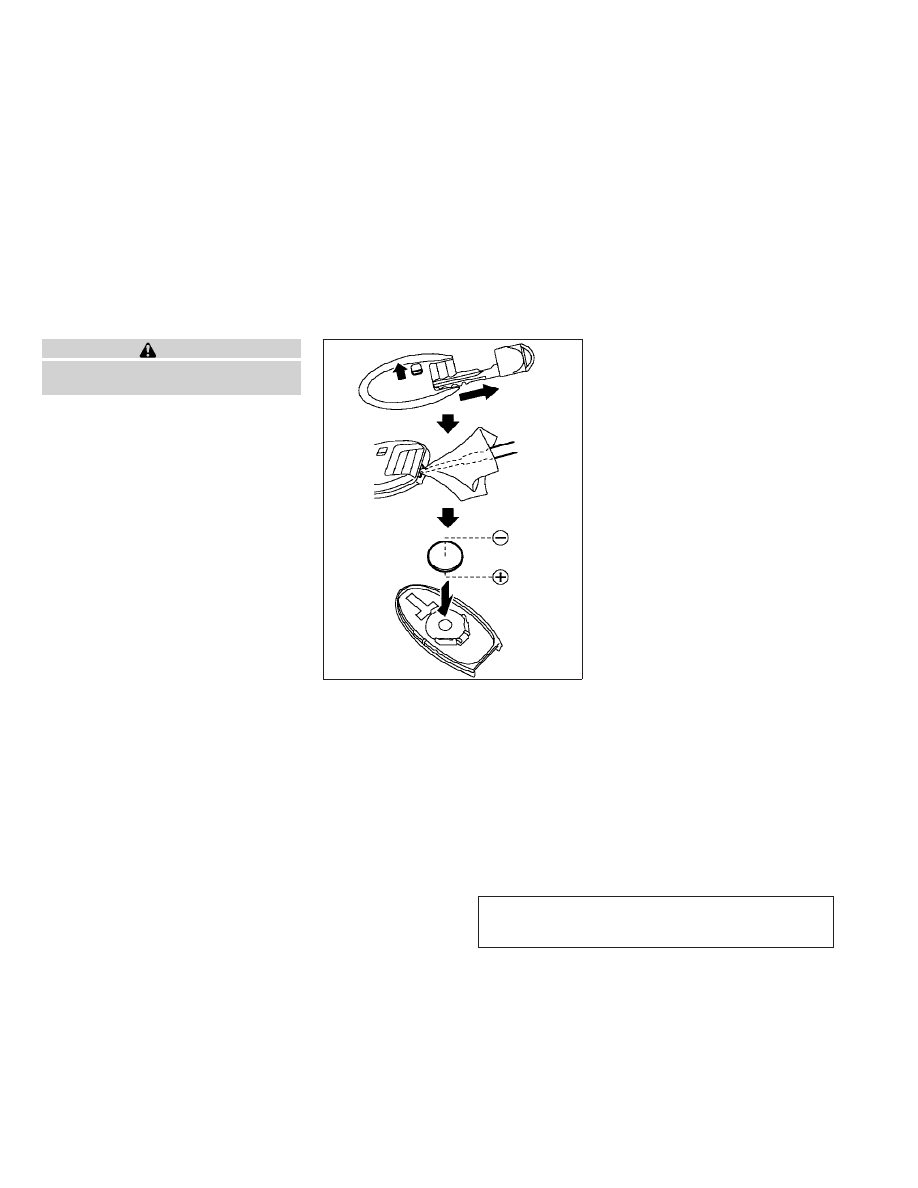Infiniti M45 (2010 year). Instruction - part 25

CAUTION
Be careful not to allow children to swallow the
battery and removed parts.
INTELLIGENT KEY
To replace the battery:
1. Release the lock knob at the back of the
Intelligent Key and remove the mechanical
key.
2. Insert
a
flat-blade
screwdriver
s
A
wrapped with a cloth into the slit
s
B
of
the corner and twist it to separate the
upper part from the lower part.
3. Replace the battery with a new one.
Recommended battery:
CR2025 or equivalent
● Do not touch the internal circuit and
electric terminals as it could cause a
malfunction.
● Hold the battery by the edges. Holding
the battery across the contact points will
seriously deplete the storage capacity.
● Make sure that the + side faces the
bottom of the case.
SDI2294
BATTERY REPLACEMENT
8-28
Maintenance and do-it-yourself
w
—
—
05/15/09—pattie
X